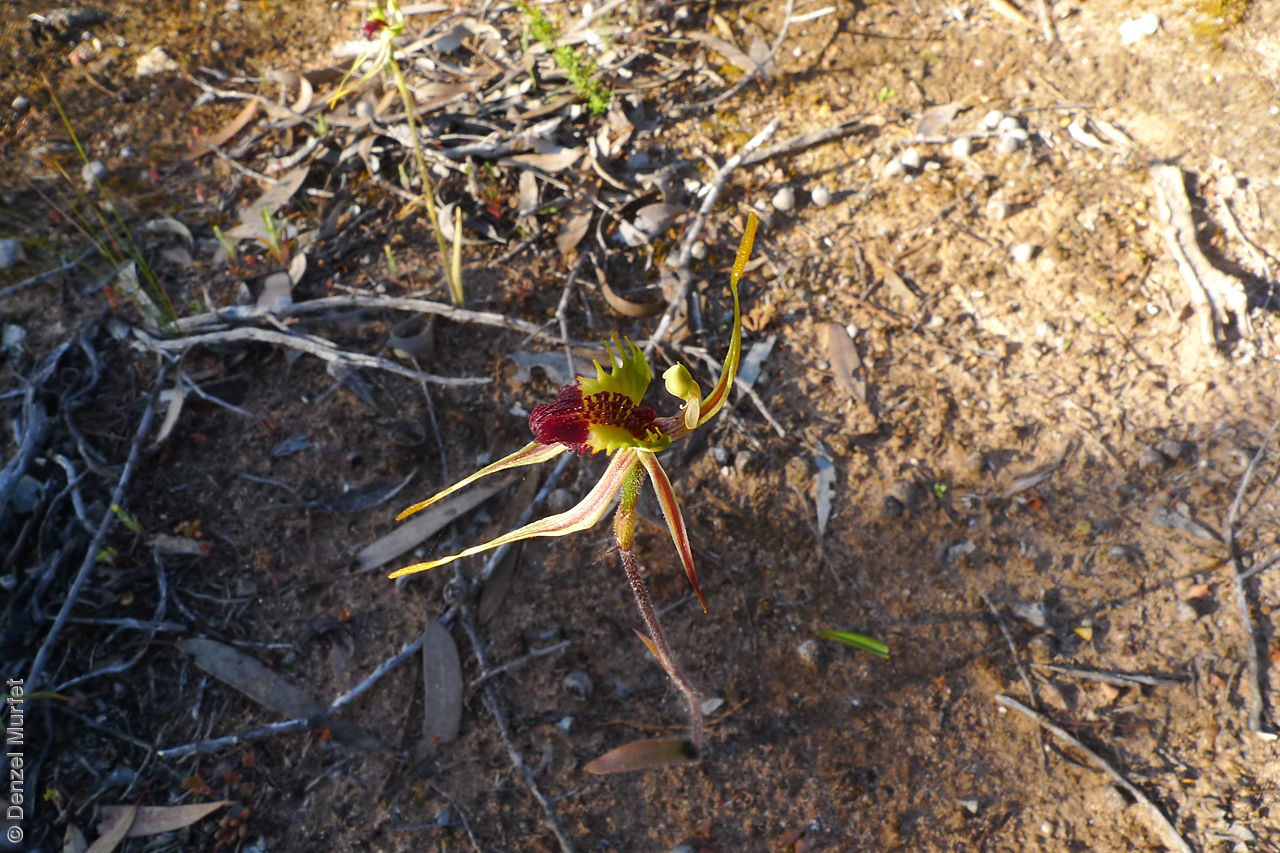
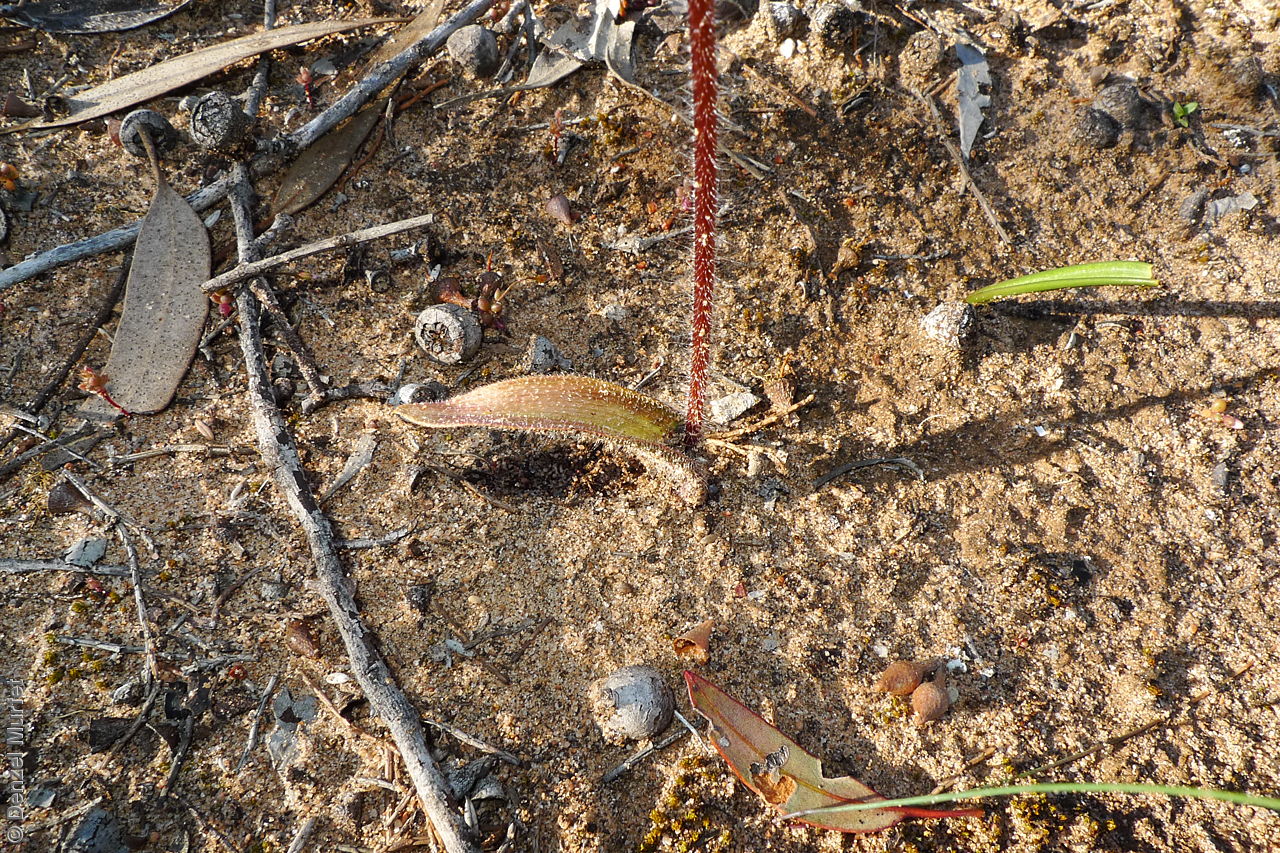
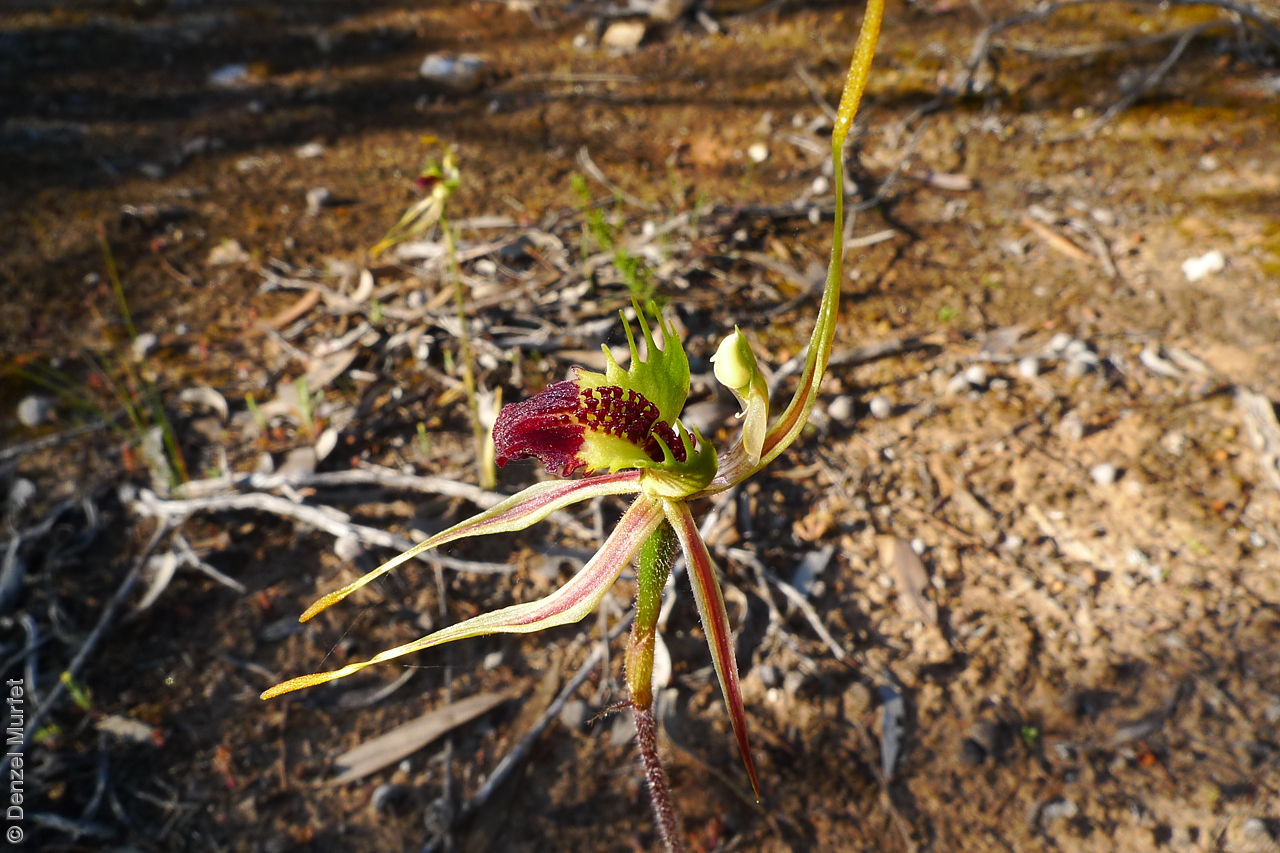
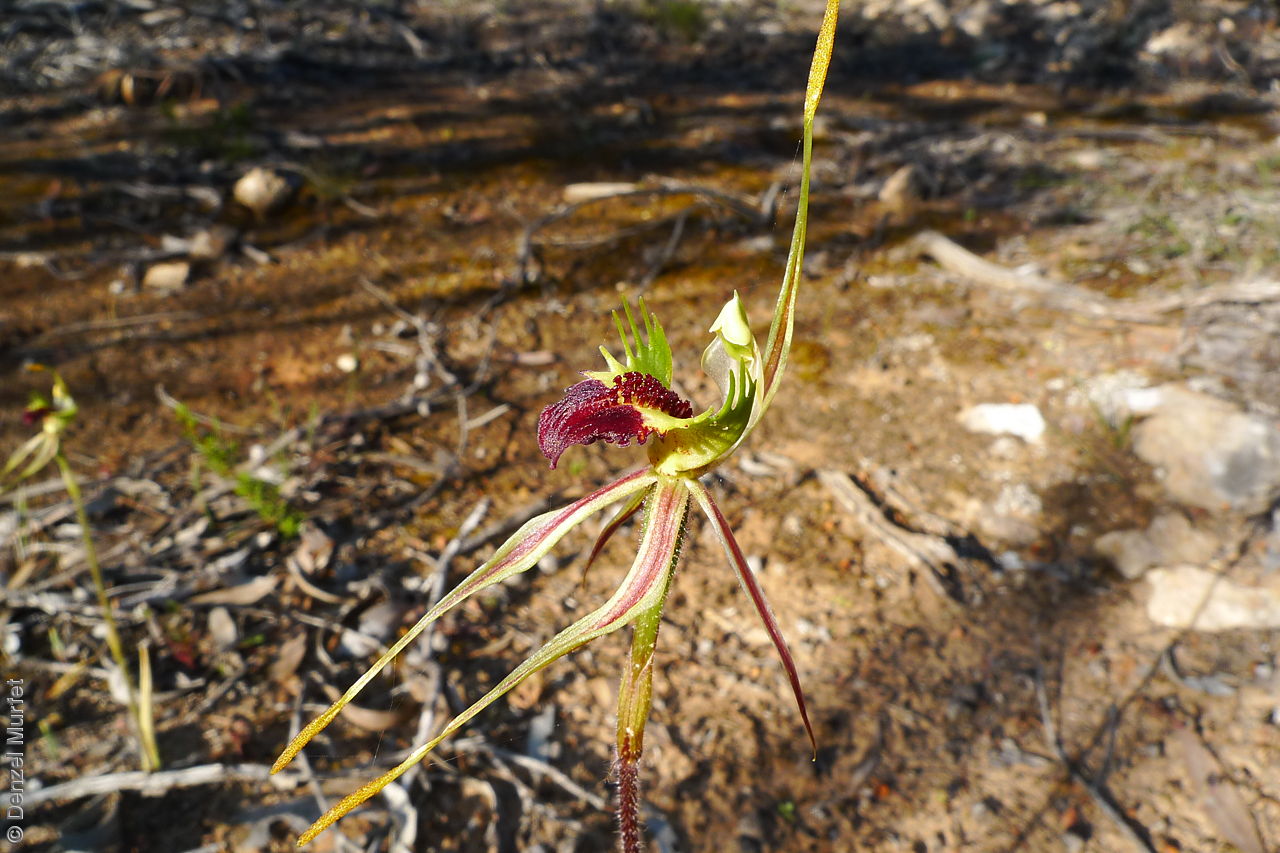
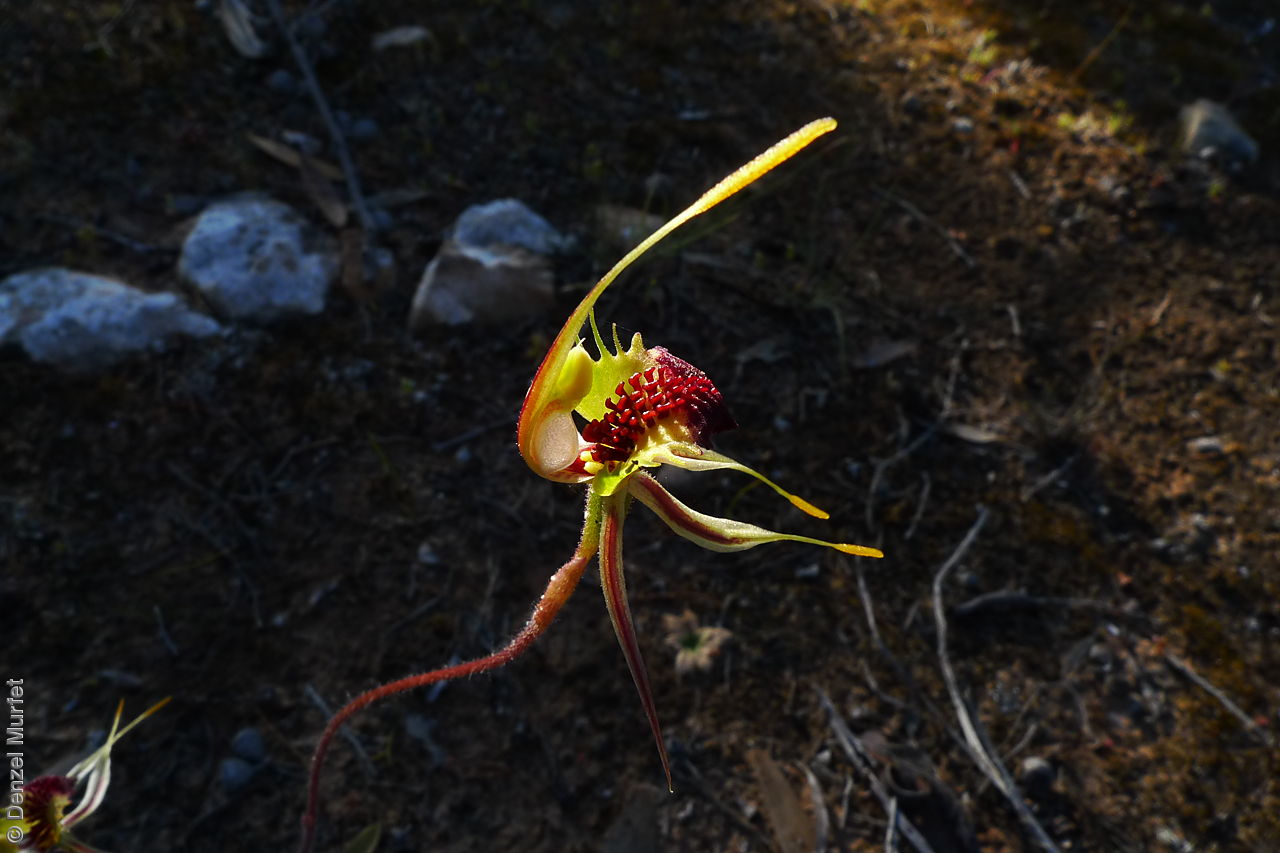
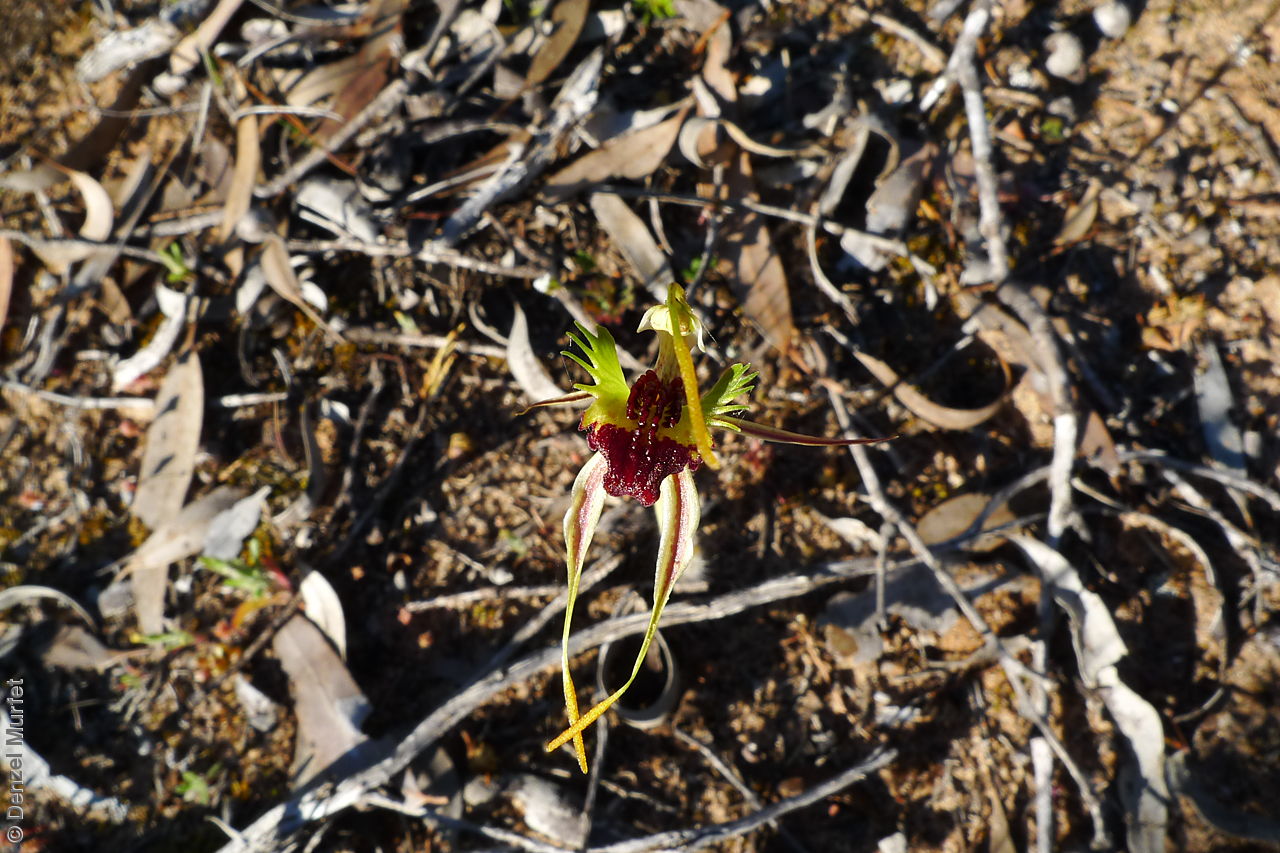
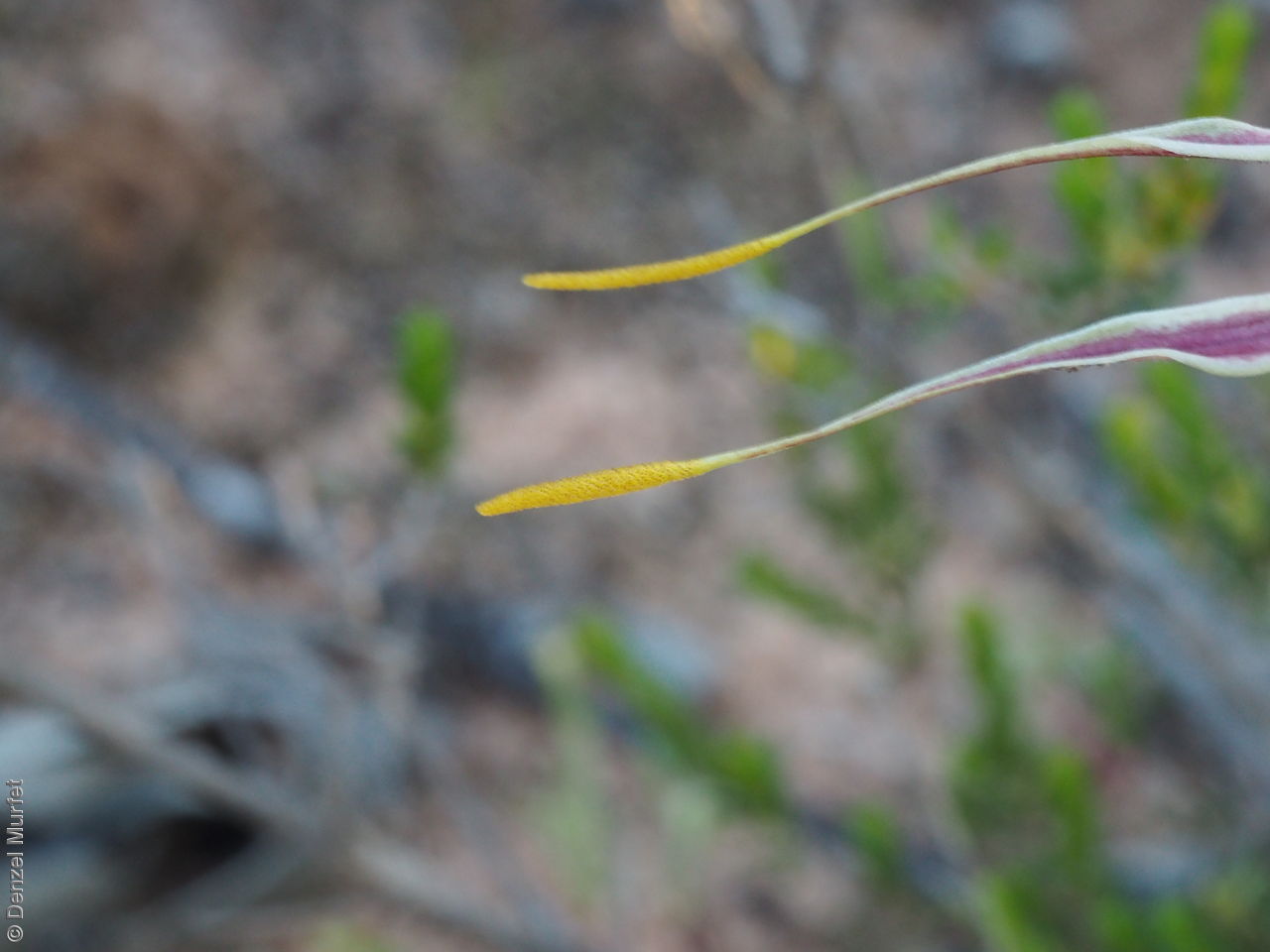


Prior names
Caladenia "long golden bayonets"
Arachnorchis aurulenta
Etymology
Caladenia from the Greek 'kallos' meaning beauty and 'aden' meaning a gland, referring to the colourful labellum and the glistening glands at the base of the column that are present in many of the species. Aurulenta from the Latin 'aureum' meaning golden, referring to its flowers.
Distribution and status
Endemic to South Australia and found on the upper Eyre Peninsula growing in gullies, under wattles and shrubs on rocky outcrops. Native. Rare in South Australia.
Herbarium region: Eyre Peninsula
NRM region: Eyre Peninsula
AVH map: SA distribution map (external link)
Plant description
Terrestrial orchid with a single, linear, pubescent leaf. Inflorescence on an erect hairy stem to 20 cm long with a single large flower. Flowering between August and September. Fruits are brown, hairy, papery ellipsoid capsule containing numerous tiny seeds.
Seed collection and propagation
Collect seeds between October and November. Collect fat capsules as they start to dry and turn brown. Pods will split and release the seeds quickly and will require monitoring. To increase the chances of collecting mature pods, it is recommended that a small breathable bag (ie. Organza bags) be used to enclose the developing capsules. Place the capsules in a container that will hold fine seeds and leave to dry for a few weeks or until the capsule split. Then carefully hold the capsule and tap it gently to release the seeds. Store the seeds with a desiccant such as dried silica beads or dry rice, in an air tight container in a cool and dry place, refrigerator or in liquid nitrogen.